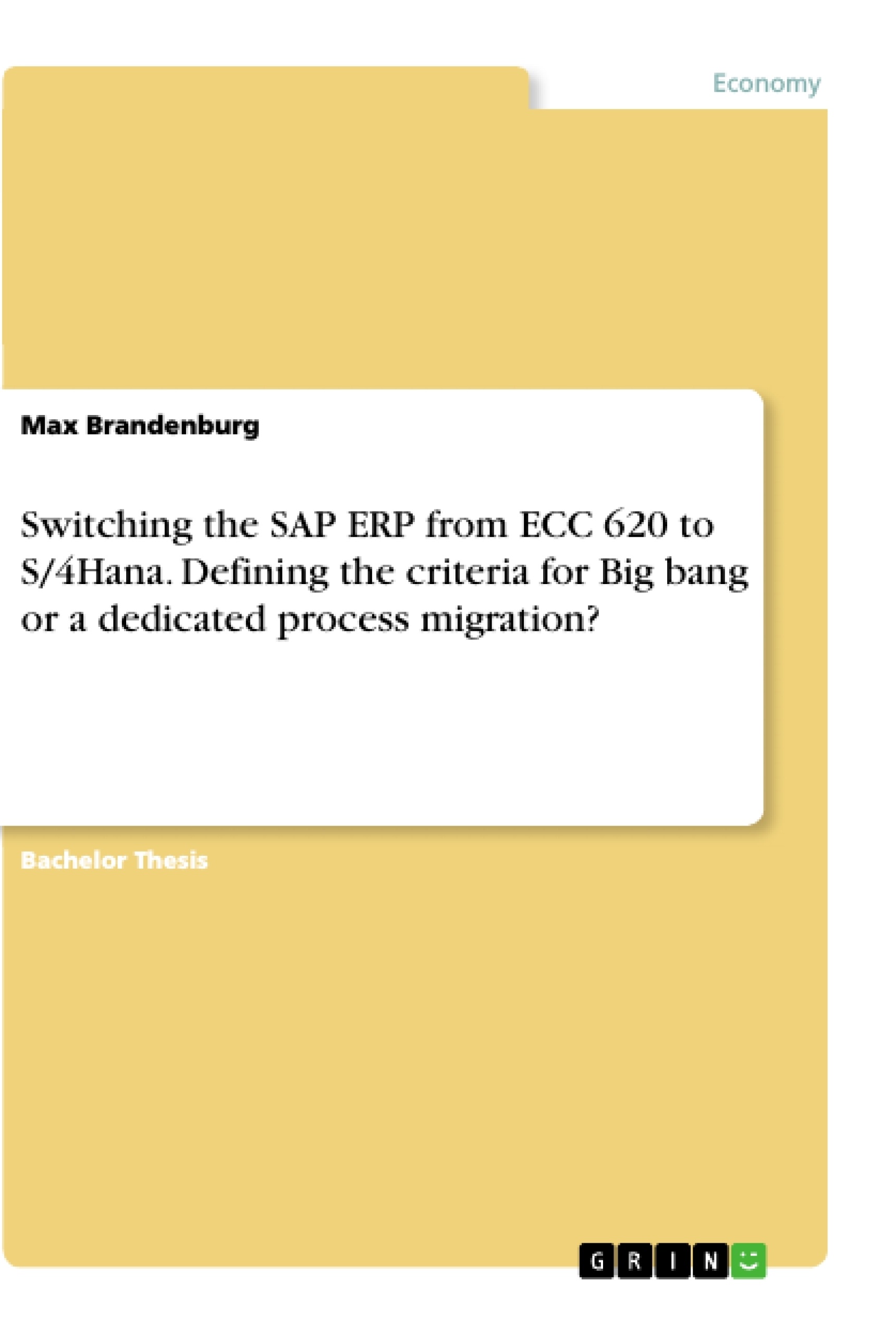SAP offers multiple ERP-systems in its product portfolio, which they have announced to change within the next ten years. Hence, any business currently applying SAP ERP products will need to migrate from ECC 620 to S/4Hana after 2030, to maintain its operating business. That migration is as complicated as it is complex, which means that companies are dependent on third-party consultations for its completion.
There are two main possibilities of how to implement such project. Through a big bang or a dedicated process migration. But what are the criteria for the different scenarios? Which factors determine the approach of the project? And more importantly, which business aspects should be prioritized to guarantee a successful implementation?
Max Brandenburg examines three approaches for a S/4Hana transition i.e. brownfield, greenfield, and landscape transformation. The author explains the concept of decision-making and change management, before evaluating and critically assessing a variety of implementation strategies. His findings are concluded in the Brandenburg Migration Check, which depicts company specific requirements, systematical requirements as well as motives and aims for the digital transformation to S/4Hana. Each factor and its strategic implications are defined. The findings are based on the experiences of different in-house as well as external consultants and are applicable to any kind of ERP change project.
Inhaltsverzeichnis (Table of Contents)
- Abstract
- Introduction
- Research focus
- Methodology
- Theoretical Background
- SAP
- ERP
- SAP ERP ECC 620
- SAP S/4HANA
- Three scenarios of a S/4HANA implementation
- Greenfield approach
- Brownfield approach
- Landscape transformation
- Critique
- Change Management
- Decision-making
- Digital Change
- The change process by Kotter
- Critique
- Implementation Strategies
- Big bang implementation
- Dedicated implementation
- B: Empirical Part
- Methodological foundation and methodological approach
- Overview: Study design
- Survey method: expert interview
- Selection and contacting of interview partners: sample
- Execution of the interviews and description of the interview situation
- Securing the results and identification of the key messages
- Evaluation and discussion of the data
- Conclusion
- Structure of the thesis and results
- Answering the research question
- Points of criticism and limitations of the own work
- Conclusion and further proposals for another research
- References
- Appendix
Zielsetzung und Themenschwerpunkte (Objectives and Key Themes)
This thesis aims to establish criteria for enterprises to decide between a big bang or a dedicated process migration when switching from SAP ECC 620 to S/4HANA. It comprehensively analyzes the scope of this transition, considering perspectives from both the software implementer and the user. The work focuses on creating a factor inventory that serves as a framework for developing a questionnaire for consultants advising companies facing this transition. Specifically, it aims to provide Actum Consulting Products GmbH with an inventory that delineates the importance of each factor and a framework for creating a questionnaire to analyze client situations.
- Decision-making criteria for Big bang vs. dedicated process migration in SAP S/4HANA transition.
- Analysis of SAP S/4HANA implementation scenarios (Greenfield, Brownfield, Landscape Transformation).
- Critical evaluation of change management models and implementation strategies.
- Exploration of the impact of personalization, business continuity, and functional congruency on implementation choices.
- Development of a framework for a questionnaire to guide consultants in advising clients.
Zusammenfassung der Kapitel (Chapter Summaries)
The introduction establishes the research question and objectives of the thesis. The focus lies on identifying criteria for choosing between big bang or dedicated process migration for SAP S/4HANA transition. The theoretical background provides an overview of SAP, ERP systems, SAP ECC 620, and SAP S/4HANA. It discusses the three scenarios for S/4HANA implementation: Greenfield, Brownfield, and Landscape Transformation, with critical analysis of each approach. The chapter on change management explores decision-making processes, digital change, and Kotter's change process, including a critique and a discussion of Eason's implementation strategies. The final theoretical chapter delves into the characteristics of both big bang and dedicated implementation strategies, outlining their advantages and disadvantages.
Schlüsselwörter (Keywords)
The main keywords of this thesis are: SAP S/4HANA, ERP system, change management, implementation strategies, Big bang implementation, dedicated implementation, Greenfield, Brownfield, Landscape Transformation, decision-making criteria, factor inventory, and questionnaire development.
- Citar trabajo
- Max Brandenburg (Autor), 2020, Switching the SAP ERP from ECC 620 to S/4Hana. Defining the criteria for Big bang or a dedicated process migration?, Múnich, GRIN Verlag, https://www.grin.com/document/937644




